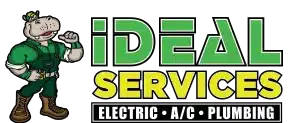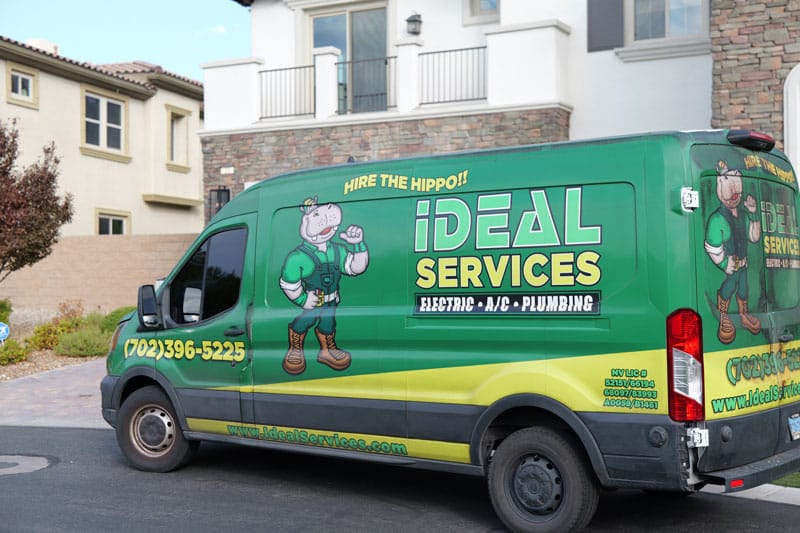Trenchless pipe repair is a modern and innovative method for fixing damaged underground pipes without the need for extensive digging. This technology offers numerous benefits, making it an attractive option for homeowners and businesses alike. At Ideal Services, serving Las Vegas, we specialize in trenchless pipe repair to ensure efficient and minimally invasive solutions for your plumbing needs. Here’s a detailed look at what trenchless pipe repair entails, its benefits, and the process involved.
Understanding Trenchless Pipe Repair
Trenchless pipe repair is a technique used to fix or replace damaged pipes without the need to excavate large trenches. This method involves accessing the pipes through small entry points, significantly reducing disruption to the surrounding area. There are two primary types of trenchless pipe repair: pipe lining and pipe bursting.
1. Pipe Lining
Pipelining, also known as cured-in-place pipe (CIPP), involves inserting a flexible liner coated with resin into the damaged pipe. The liner is inflated and pressed against the interior walls of the pipe. The resin then cures, creating a new pipe within the old one. This method is effective for repairing minor cracks, leaks, and corrosion.
2. Pipe Bursting
Pipe bursting is used for more severe damage or when a complete pipe replacement is necessary. This technique involves pulling a new pipe through the old one while simultaneously fracturing the old pipe outward. The new pipe is usually made of high-density polyethylene (HDPE), which is durable and long-lasting.
Benefits of Trenchless Pipe Repair
Trenchless pipe repair offers several advantages over traditional methods, making it a preferred choice for many property owners.
1. Minimal Disruption
One of the most significant benefits of trenchless pipe repair is the minimal disruption it causes. Traditional pipe repair methods require extensive digging, which can damage landscaping, driveways, and sidewalks. Trenchless methods, however, involve only small access points, preserving your property and reducing the need for costly restoration work.
2. Cost-Effective
While the initial cost of trenchless pipe repair may be higher than traditional methods, it is often more cost-effective in the long run. The reduced need for excavation and restoration work lowers overall project costs. Additionally, the durability of the materials used in trenchless repair means fewer future repairs and replacements.
3. Quick and Efficient
Trenchless pipe repair is generally quicker than traditional methods. The reduced excavation means less time spent digging and restoring the area. In many cases, trenchless repairs can be completed in hours, minimizing inconvenience to property owners.
4. Environmentally Friendly
Trenchless technology is more environmentally friendly than traditional methods. The reduced excavation helps preserve the landscape and minimizes soil displacement. Additionally, the materials used in trenchless repair are often more durable and resistant to future damage, reducing the need for frequent repairs and the associated environmental impact.
For more information on the environmental benefits of trenchless pipe repair, check out this guide.
The Trenchless Pipe Repair Process
Trenchless pipe repair involves several key steps to ensure a successful and long-lasting result.
1. Inspection and Assessment
The first step in trenchless pipe repair is thoroughly inspecting and assessing the damaged pipe. This is typically done using a high-resolution camera inserted into the pipe to identify the extent and location of the damage. This inspection helps determine the most appropriate repair method. Here are more details from Consumer Reports on choosing the right people for the job.
2. Cleaning the Pipe
The pipe must be cleaned before the repair can remove any debris, roots, or buildup. This is usually done using hydrojetting, which involves high-pressure water jets to clear the pipe.
3. Repair Method
Depending on the assessment, pipe lining or pipe bursting will be used. The resin-coated liner is inserted and cured for pipelining to form a new pipe within the old one. For pipe bursting, the new HDPE pipe is pulled through the old pipe while the old pipe is fractured and displaced.
4. Final Inspection
After the repair is complete, a final inspection is conducted to ensure the integrity and functionality of the new pipe. This inspection ensures that the repair was successful and that there are no remaining issues.
Ideal Services Provides Trenchless Pipe Repair in Las Vegas
Trenchless pipe repair offers numerous benefits, including minimal disruption, cost-effectiveness, quick and efficient repairs, and environmental friendliness. Ideal Services specializes in trenchless pipe repair, providing expert solutions to ensure your plumbing system remains in optimal condition without the hassle of extensive excavation. Serving Las Vegas, we are dedicated to delivering top-quality plumbing services to meet your needs.

